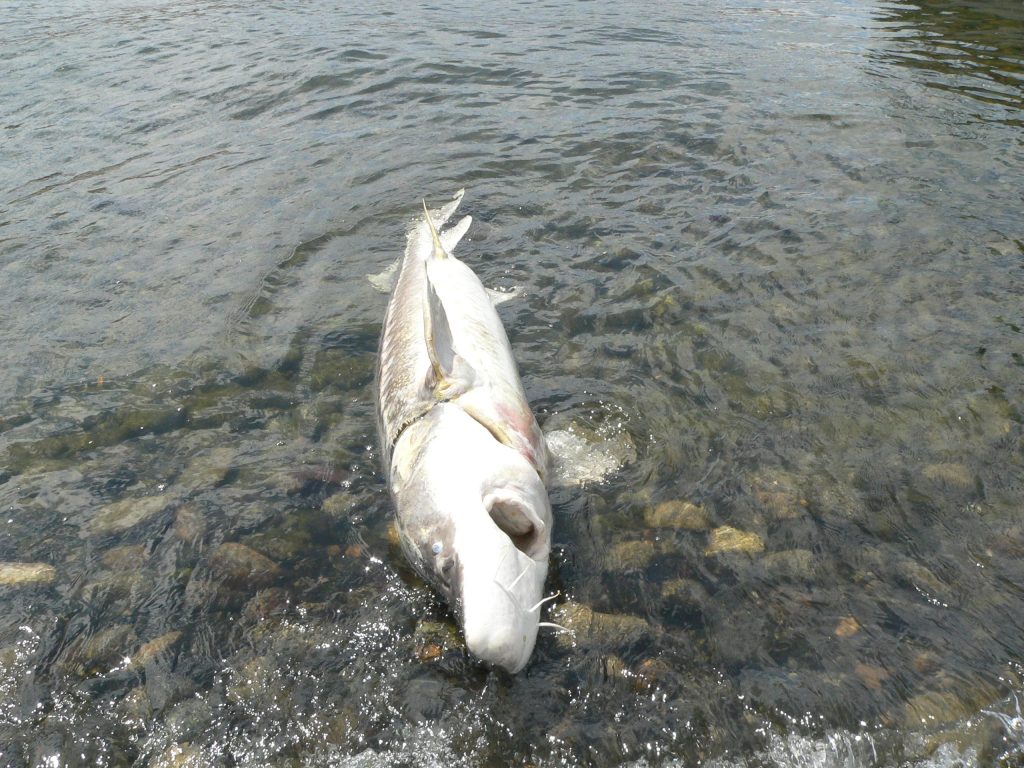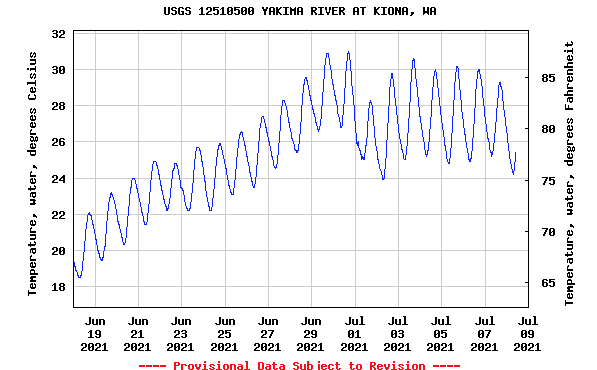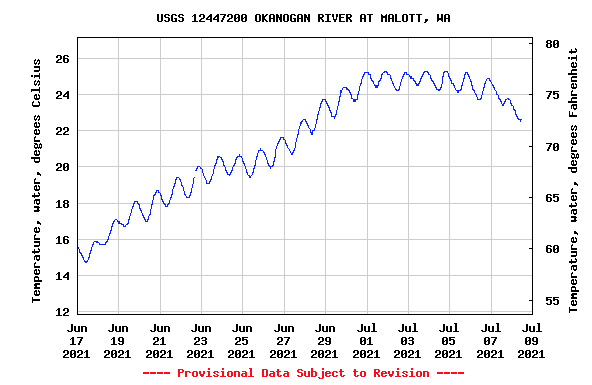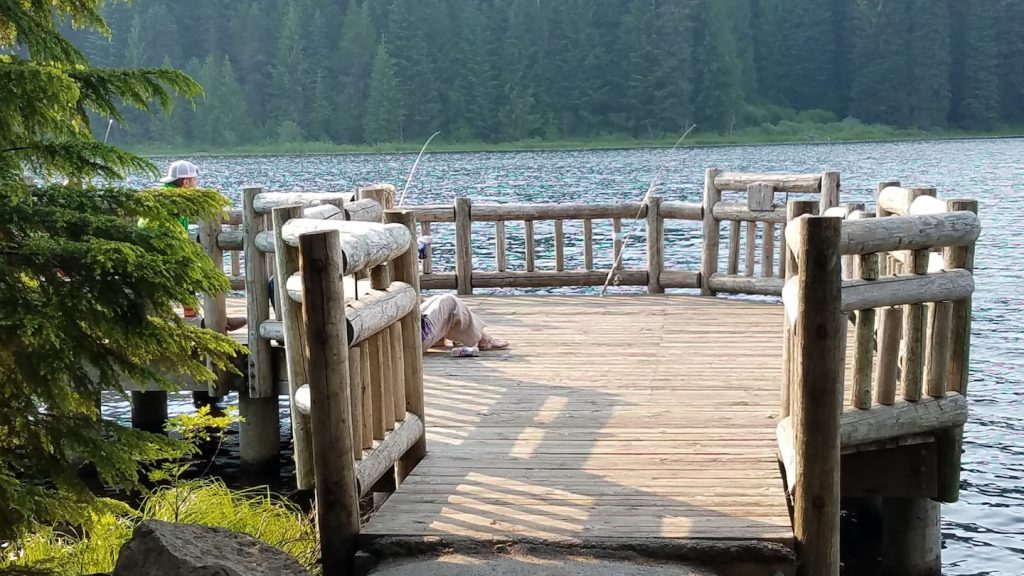
Website Set Up To Report Washington Fish, Shellfish Dieoffs In Heatwave’s Wake
WDFW is asking anglers to report concentrations of dead fish and shellfish they come across as hot weather and dry conditions continue across Washington, as well as to take care when handling and releasing those they catch this summer.
The agency says that members of the public can submit reports of “potential fish or shellfish die-offs related to low water levels, high temperatures, or other environmental conditions” via https://publicinput.com/X7060.

The site allows users to pinpoint the location of the dieoff on a map, provide a description of the spot, what they observed, post images and leave contact details, info that could help biologists learn more about the historic Northwest heatwave’s impact on fish and shellfish.
“If you see what appears to be an unusual number of dead fish, or something like a single large sturgeon, we want to know about it, and the reporting tool is an easy way to share your information with us,” said Kirt Hughes, WDFW Fish Management Division manager, in a press release. “It’s unfortunate when we have to investigate any potential die-off, but with the public’s help we can get a more comprehensive picture of certain environmental impacts on these populations.”

July 2015 saw massive mortality of sockeye in the Columbia as some quarter million of the salmon succumbed to high water temperatures caused by a winter that produced very little snowpack and torrid early summer days.
That led to the subsequent loss of dozens of mature sturgeon in the east Gorge pools and around Tri-Cities due to low dissolved oxygen levels in the water, among other factors, according to Ryan Lothrop of WDFW’s Columbia River Management Unit.
River flows this summer are higher thanks to a good snowpack, but some Eastside streams are still seeing water temps into the upper 70s, with the lower Yakima near Benton City warming up to the mid-80s through the day.
During the worst of the heatwave in late June, even the West End’s mountain-fed Bogachiel got up to an incredible 78 on the same day the Forks area had a record-shattering air temp of 110.
Water temps above 68 are dangerous and deadly for salmonids.
There’s also a worrying estimate from a BC marine biologist that a billion-plus tidal-flat critters in the Salish Sea, which includes Puget Sound, may have essentially steamed to death when super-low tides occurred during the afternoon.

As for caring for your catch, Hughes says, “A few simple steps can go a long way to helping reduce stress on fish.”
According to WDFW, those include:
“Fishing in the early morning, when air and water temperatures are cooler, can help reduce stress on fish.”
“Avoiding disturbing fish during the hottest part of the day is also a best practice for other activities and work around water.”
“If you fish the same areas every year, try to be aware of water levels and temperatures – if the water seems especially low, or hotter than usual, consider giving fish a break by fishing elsewhere or coming back another time.”
“High lakes are also a great option this time of year thanks to the cooler temperatures at higher elevations.”

“If you’re fishing in an area where you may have to catch and release, or if you choose to release a fish, it’s critical to take steps to minimize the impact. Using appropriate gear and landing the fish quickly can help, as can making sure not to remove the fish from the water once it’s reeled in. Quickly remove hooks, and consider using barbless hooks. You can also help the fish revive by pointing it into a slow current, and letting it swim out of your hands whenever possible.”
If your stream doesn’t have a water temperature gauge on it, you might consider bringing a thermometer to test the river.
Here’s a link to a piece I wrote in summer 2019 about fishing for pink salmon in a river on the edge of being too warm.


